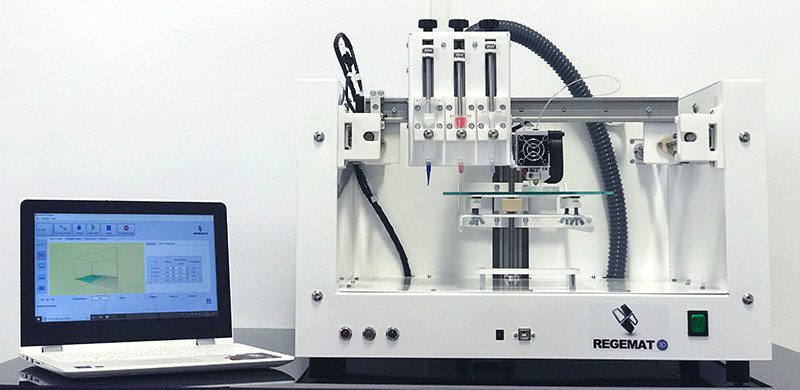Bioprinting, a rapidly emerging technology, is revolutionizing the field of life sciences. 3D bioprinters are the tools that enable researchers to create living tissue constructs, such as skin, bone, cartilage, and even organs, using 3D printing techniques. In this blog, we will discuss the 3D bioprinter and its role in the field of life sciences.
What is a 3D Bioprinter?
A 3D bioprinter is a machine that uses computer-aided design (CAD) software to create 3D models of living tissue constructs. The bioprinter then uses a biocompatible material, such as hydrogels, to deposit layers of living cells in a precise pattern, creating the desired tissue construct. The process of 3D bioprinting involves several steps, including:
- Design: The 3D model of the desired tissue construct is created using CAD software.
- Material preparation: A biocompatible material is prepared, usually in the form of a hydrogel, that can be used as a scaffold for the living cells.
- Cell preparation: Living cells are obtained and prepared for use in the bioprinter.
- Printing: The bioprinter deposits the hydrogel and living cells in a precise pattern, layer by layer, to create the desired tissue construct.
- Post-processing: The tissue construct is then incubated and cultured to promote cell growth and maturation.
Applications of 3D Bioprinting in Life Sciences
- Regenerative Medicine: 3D bioprinting is being used to create tissue constructs that can be used to repair or replace damaged tissues or organs. For example, scientists have been able to create functional liver tissue, which could potentially be used to treat liver disease.
- Drug Testing: The ability to create 3D tissue constructs has opened up new opportunities for drug testing. By creating tissue constructs that mimic human organs, researchers can test the efficacy and toxicity of drugs in a more realistic and accurate way.
- Disease Modeling: 3D bioprinting can be used to create models of human tissues and organs that can be used to study diseases and develop new treatments. For example, scientists have used 3D bioprinting to create models of cancer cells, which could be used to test new cancer drugs.
Challenges in 3D Bioprinting
While 3D bioprinting has shown great promise, there are still several challenges that need to be overcome. One of the biggest challenges is creating a vascular network within the tissue construct. Without a vascular network, the tissue will not receive the necessary nutrients and oxygen to survive. Another challenge is the need for better biocompatible materials that can support the growth and maturation of the living cells.
Conclusion
3D bioprinting is a rapidly emerging technology that has the potential to revolutionize the field of life sciences. With the ability to create living tissue constructs, researchers can explore new avenues in regenerative medicine, drug testing, and disease modeling. While there are still challenges to overcome, the future of 3D bioprinting looks bright, and it is likely to play an increasingly important role in the life sciences in the years to come.



